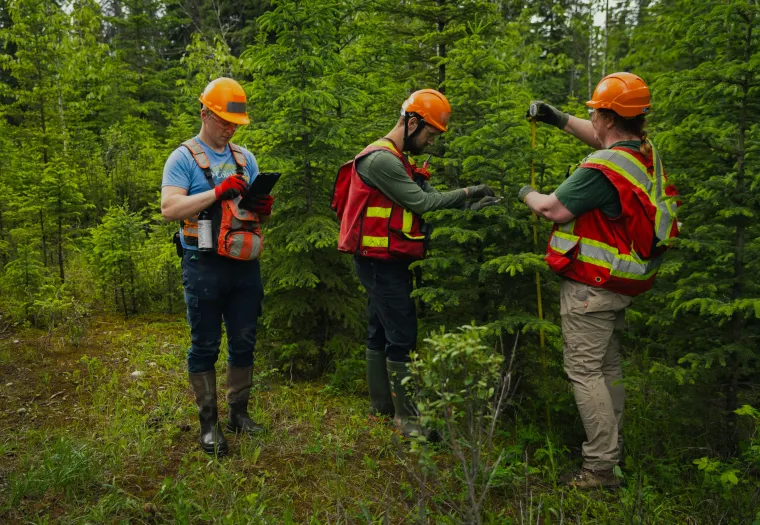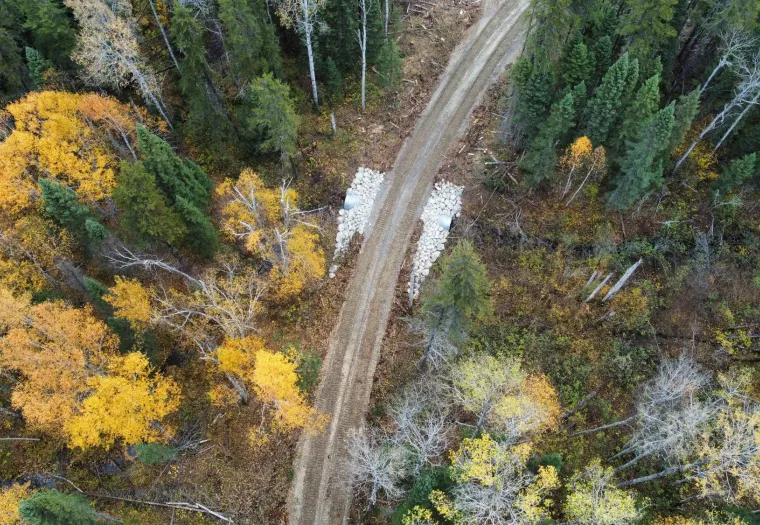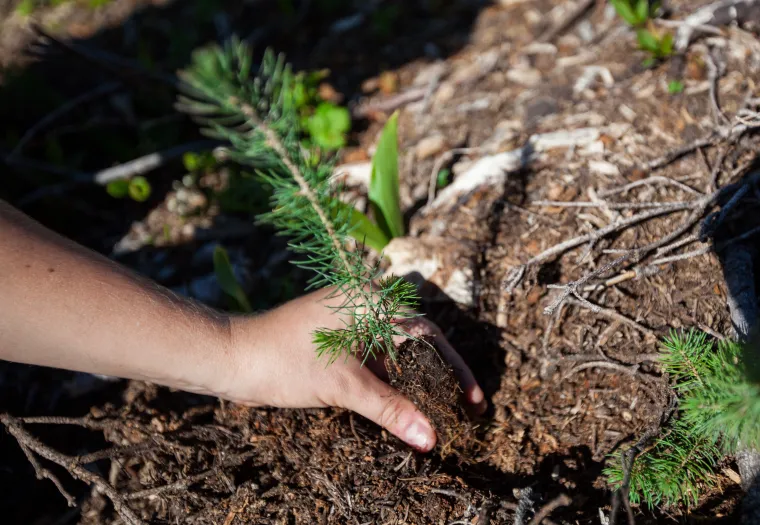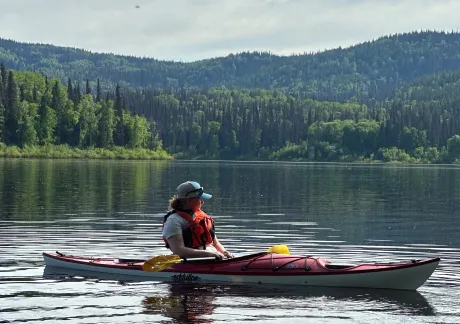
Sustainable Forest Management
Managing on the Land
Our Approach
We care for our forests by employing sustainable forest management, ensuring their environmental, social, cultural and economic value is maintained.
We directly manage approximately 8.2 million hectares of public forestland in Canada. Our annual harvest from Canada’s forested land base represents less than 1% of the total area. Harvesting and reforestation plans prioritize ecologically sound methods.
In Western Canada, where we manage forests, we are 100% certified to the voluntary Sustainable Forestry Initiative® (SFI) Standard and subject to stringent federal, provincial and local regulations. These include industry-specific environmental requirements for fish and riparian management, reforestation, soil and water management and protecting endangered species and critical habitats.
In regions where we do not manage forest lands, including eastern Canada, the Southern U.S., the U.K. and Europe, we procure fibre from private landowners and public lands managed by others and third-parties certified by either the SFI—an internationally recognized sustainable forest management certification program—or the Forest Stewardship Council® (FSC).
We undergo comprehensive approval processes to secure government permits and licenses for a total Annual Allowable Cut (AAC) of 12.5 million cubic metres. The amount harvested each year is determined by customer needs and environmental conditions.
We take an ecosystem-based approach to forest management, incorporating risk management, habitat restoration and renewal and the protection of sensitive sites. Our forestry professionals and biologists collaborate to monitor and manage the interconnected elements essential for healthy, resilient ecosystems.
Forest Values
West Fraser is focused on ensuring the forests we operate in are healthy and thriving. Active forest management includes ecosystem-based management that enhances forest resilience.
Rather than focusing solely on timber production, our sustainable forest management approach considers a wide-ranging set of forest values including carbon, water, biodiversity, traditional use, wildlife and recreation.
Active forest management ensures the long-term viability of forest ecosystems by implementing strategies that maintain ecosystem integrity, such as maintaining wildlife corridors, protecting sensitive habitats and promoting sustainable logging practices.

Our forestry professionals are regularly on the land to develop our long-term forest management plans and the annual harvest plans that come from them.
Plans use the most current data available and we are increasingly incorporating new technologies such as LiDAR and other remote sensing into our processes. Through partnerships with universities and other research organizations, we use the latest scientific research to inform our decisions.
Harvesting and reforestation plans prioritize ecologically sound methods. Our plans determine the most ecologically appropriate method of harvesting the trees and reforesting the site. Our annual harvest from Canada’s forested land base represents less than 1% of the total area.

West Fraser adheres to sustainable road construction practices.
Forestry roads increase access for other sustainable forest uses, including fire mitigation, recreation and traditional and cultural uses. We are working to minimize permanent roads and reclaim short-term and inactive roads to mitigate the potential impacts on biodiversity, such as wildlife habitats and travel corridors.
We mitigate impacts through monitoring and management efforts, including road deactivation and rehabilitation. We seek to collaborate with local and Indigenous communities and other partners to facilitate the restoration of inactive roads, contributing to habitat recovery.

When we harvest, we apply principles of ecosystem-based management to ensure our forests are healthy and resilient.
This includes retention harvesting techniques, which create conditions similar to natural disturbances, such as openings that vary in size and shape with various amounts of trees left standing either in clumps or as individual trees. Large woody debris is left on the forest floor, where it provides habitat and decomposes to recycle nutrients into the soil.

We reforest harvested areas with a similar mix of native tree species by planting seedlings, supporting natural regeneration or directly seeding the area. Healthy, young, regenerating forests pull more carbon per unit area than almost any other land cover.
Reforestation is rigorously regulated by the provincial governments where we operate on the land base. On an annual basis, West Fraser reports all of our harvesting and reforestation activities to maintain our license to harvest timber.
Since 1955, West Fraser has planted more than 2 billion trees to renew the forests where we operate continually.

Once a new forest is established, it’s monitored with surveys to determine how healthy and big the seedling trees have grown.
We also have extensive growth and yield programs that allow us to assess current conditions and monitor growth across the range of stand conditions in our forests. This is done by measuring trees on plots that are established across the forests. This information is continually updated and is critical for monitoring harvest levels.

West Fraser is committed to resilient forests. We view forests, ecosystems, biodiversity and local communities as crucial for the wood products industry.
In 2024, West Fraser harmonized our approach across the company with our Sustainable Forest and Wood Procurement Policy.

